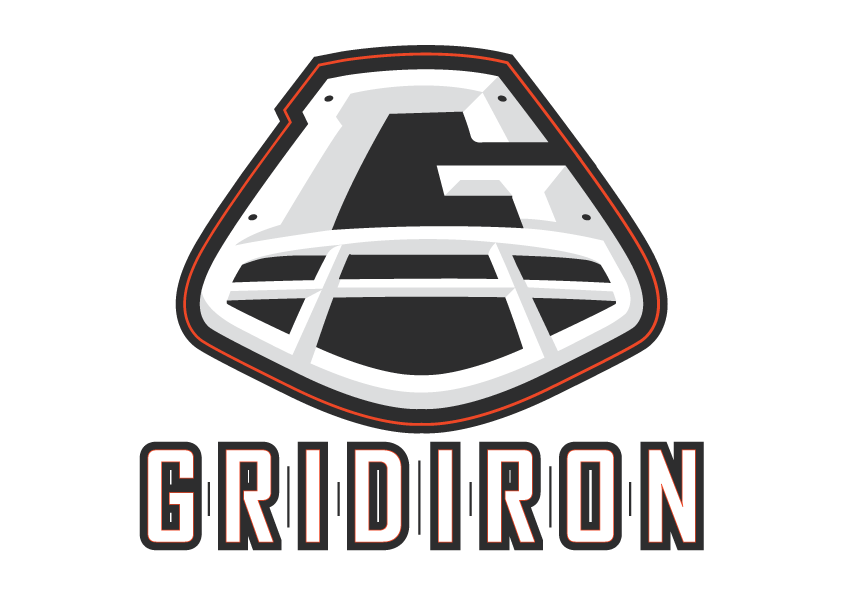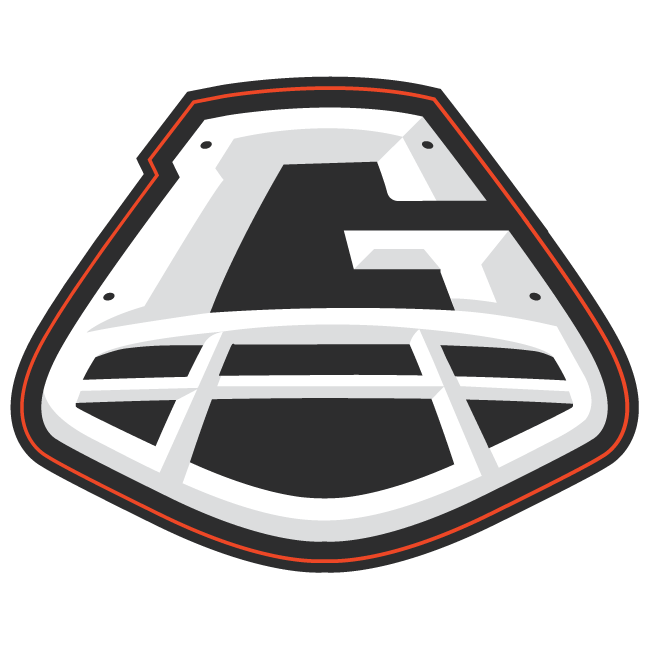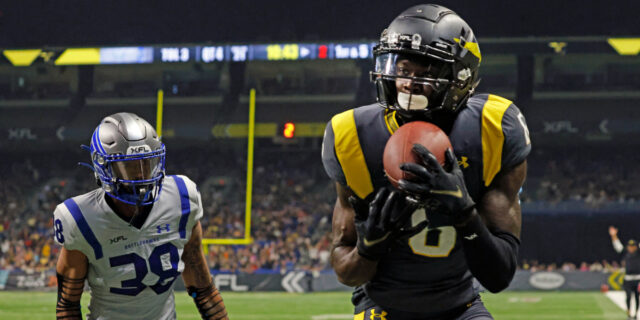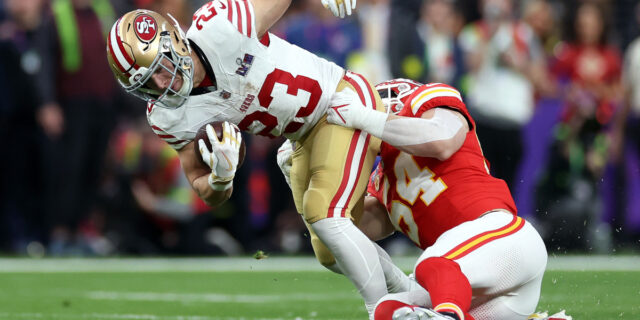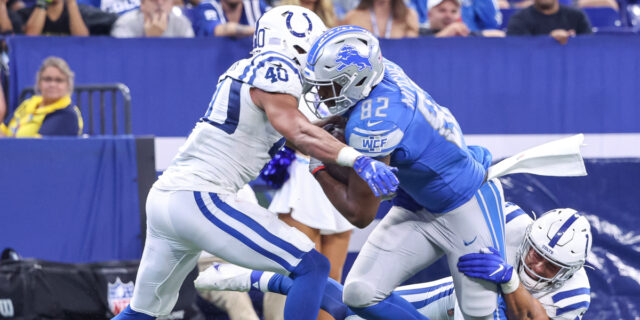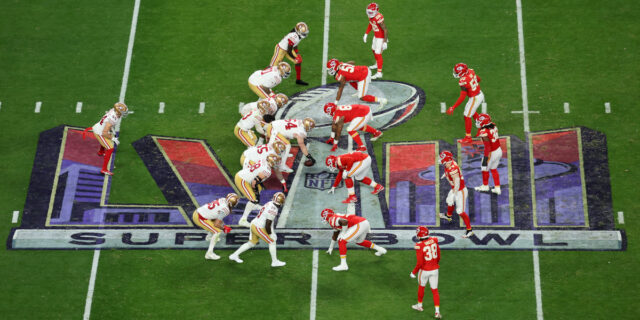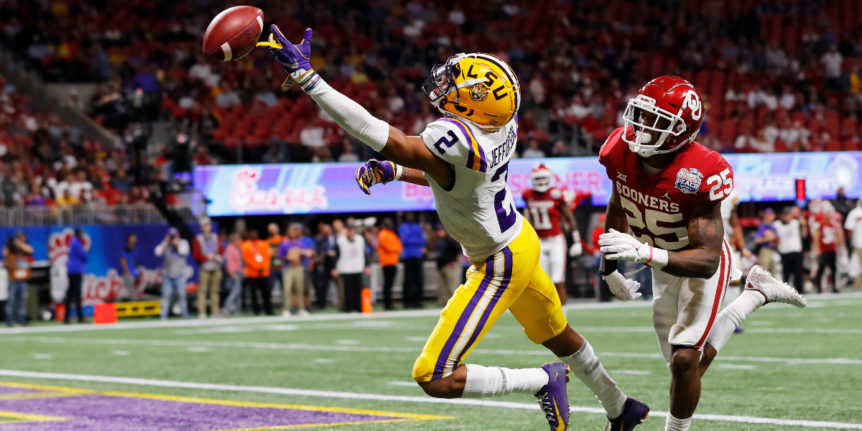
Anatomy of a Wide Receiver
As the NFL prepares to welcome Jerry Jeudy, Henry Ruggs, CeeDee Lamb, Tee Higgins and Co through the 2020 Draft, we turn to regular Gridiron contributors Jeff Reinebold and Mike Carlson for their take on what makes the perfect wide receiver
Our resident X’s & O’s guru was a former wide receivers coach in big-time college football and has his own views on what traits all great pass-catchers share.
HANDS
It seems obvious, but playing wide receiver starts with the ability to catch and ball skills. You can have size, strength, speed, or any other asset but, if you can’t catch the football, you’re going to struggle. There have been plenty of cases on the NFL where guys have been sensational athletically yet have also had inconsistent hands – and it never works out. The ability to catch the football, which is both a talent that can be improved and an innate skill, is crucial. Wide receivers come in all shapes and sizes – from athletic machines like Julio Jones to little guys like Cole Beasley – but they all have great hands.
STRENGTH
Strength is one of the underrated aspects of the game. People look at the diminutive wideouts in the NFL and think they aren’t strong, but looks can be deceiving. If you don’t have strength, you can’t play wideout in the NFL. It’s that simple. NFL wide receivers have to be able to get off press coverage and work their way through traffic. Do you think you can do either of those without being strong?
SPEED
There are two different types of speed: short-area quickness and long, over-the-top speed, and you have to have one or both of these. They’re really coveted in wide receivers. You look at some guys like Wes Welker or Cole Beasley and they don’t have the straight-line speed to beat you over the top, but they are incredibly quick in small areas. That is huge, because that ability to get in and out of breaks with extreme speed is crucial. It’s often a straight race between receivers and the DBs when they make their breaks, and the DBs often have a better position.
ROUTE-RUNNING
Route-running is what separates good and great wide receivers. You need to make it so the great athletes on the other side watch you and have no idea what you’re going to do. I coached the likes of Cole Beasley and Emmanuel Sanders and they had that same ability to drop their hips and burst back out of a cut on a dime. Also, when I coached those guys, I’d have our film team record them from the ground, so they could work on making all of their routes look the exact same. When they come off the line of scrimmage, their body angles and arm positions must look the same regardless of what they’re running. The ability to disguise what you’re doing at full speed is huge.
COURAGE/TOUGHNESS
Some of the collisions over the middle in NFL games are like car crashes. You run over that part of the field with the ball, and you know that’s where the big boys play. Not only does it take a certain type of guy to be willing to do that – and perform to the best of his ability – it also requires a level of physical preparation to be able to overcome the inevitable punishment.
INTELLIGENCE
People totally underestimate the football IQ required to play the position. In today’s NFL, a wide receiver has to do so many thing, from identifying the coverage pre-snap, to understanding what the defense will do after the snap. And that’s only half of the job. Generally, an NFL team will enter a game with a gameplan featuring over 100 offensive plays; for each of those plays, a wideout must know what he needs to do on every one, and often what all of the other receivers have to do too. That doesn’t even factor in teams having multiple route concepts in the same play, the cadence, or the depth of his route.
RELATIONSHIP WITH QB
In some offenses, like New England, you’re required to make your own decisions on what route to run based on how the defense plays. And not just that, you’ve also got to read it exactly the same way as the quarterback – or it’s a turnover waiting to happen. That puts an incredible amount of emphasis on the relationship between a quarterback and his pass-catcher; you often hear commentators speak of chemistry, and it’s really essential.
CATCHING RANGE
The reality in the NFL is that the defenses, and particularly coverage guys, are so good that it’s impossible to get open on every play. The better you are, the more difficult it can be as coordinators look to negate your impact with chips or double-teams, all designed to impact your timing and ability to play. That means, in many instances, you’re just going to be required to make a play on the ball with defenders draped over you – which is why catching range is so crucial. Emmanuel Sanders is 6ft tall, but he has incredible catching range because his hands and arms are so big, so that wingspan is another measurement coaches look for.
COMPETIVENESS
It’s often said that you get a lot of divas playing wide receiver, and it’s true. But a big reason for that is because it takes a certain personality to play the position; you have to be unbelievably competitive. The desire to make plays, put yourself in a physically dangerous position is key. It can easily boil over into behaviour that people don’t understand, but the great receivers – be it Jerry Rice, Randy Moss or Cris Carter – all had an insane level of competitiveness. They wanted the ball in crucial situations and, if you don’t throw their way, they’d let you know.
DELUSION
It sounds ridiculous, but you have to have that level of delusion, too. So much of playing wide receiver is a mindset, believing that you’re the best guy out there and can get open on every play. I used to kid Cole Beasley at SMU, ‘You see a 6ft 4ins guy when you look in the mirror, don’t you?’ and he did. Cole, who’s actually around 5ft 8ins and 170lbs, didn’t believe there was anybody who could cover him. And that’s how they all feel.
THE BIONIC WIDE RECIEVER
Mike Carlson has seen his fair share of wideouts over the years in his role as commentator and analyst, but still finds it hard to put togther the ultimate combination.
Putting together the pieces of a perfect pass-catcher presents a peculiar problem. I was imagining what the actual bionic receiver would look like, a collection of spare parts bolted together, and kept seeing the imagine of Peter Boyle in Young Frankenstein singing Putting On The Blitz. Oh, that wasn’t Cole Porter’s title?
It’s difficult in a few ways. Some elements of receiving are physical, some are mental. As football has evolved, receiving skills have too. Today the ability to win a 50/50 jump ball is as, or sometimes more, important than the ability to shake free of a defender with a sharp cut. The ability to read a defense and find its soft spots, to break your pattern beyond rather than short of the first-down marker, and to run routes so well your quarterback can throw to a spot with confidence you’ll be there, all sometimes seem like skills of a dying trade.
But a few things remain constant. A great receiver needs to have hands that can hang on to a football, reflexes enough to adjust to wherever it might be thrown and concentration enough to look the ball into his hands knowing he’s about to get his bell run, or a lower back dented like a rear-ended car.
So, I’ll tell you right at the start that, if I weren’t building a guy from spare parts, and you asked me whose physical skills I’d most prefer to have, it would be Randy Moss. If you asked me which receiver got the most out of the least physical ability, I might say Raymond Berry, who’s a Hall-of-Famer. Or maybe, even better, Howard Twilley of the Miami Dolphins, who isn’t. Combine Moss with either of them, and that would be my perfect wide receiver.
That said, with free range to take individual attributes from the best of the best, here’s who I’d choose to dissect:
SIZE
Calvin Johnson
Maybe the best 50/50 guy ever.
STRENGTH
Steve Smith
There’s a reason he’s so tough.
BRAINS
Don Hutson
He basically invented pass patterns, after all.
VISION
Jerry Rice
He had an innate sense of the game around him, on top of everything else.
HANDS (LEGAL)
Lionel Taylor
The Megatron of the AFL.
HANDS (ILLEGAL)
Michael Irvin
No one used them better to get himself open.
SPEED
Bob Hayes
The world’s fastest human was a football player who could sprint, not vice versa.
RUNNING
Elroy ‘Crazy Legs’ Hirsch
Watch the film sometime…
QUICKNESS
Steve Largent
One of the great route-runners.
PRECISION
Fred Biletnikoff
Twelve and out meant 12 and out, not 11 7/8 and out.
GRACE
Paul Warfield
Played for run-first teams in Cleveland and Miami, but was the big-play guy for both without seeming to break a sweat.
BALANCE
Lance Alworth
‘Bambi’ was a running back in college. No one adjusted better in the air, nor looked better doing it.
HEART
Anquan Boldin
Best of his era over the middle.
SWEAT
Raymond Berry
No one worked harder to make himself great.
MOUTH
Terrell Owens
He could back up the brag – and carried a sharpie in his sock!
Both articles originally appeared in Issue XXVI of Gridiron magazine – for individual editions or subscriptions, click HERE
